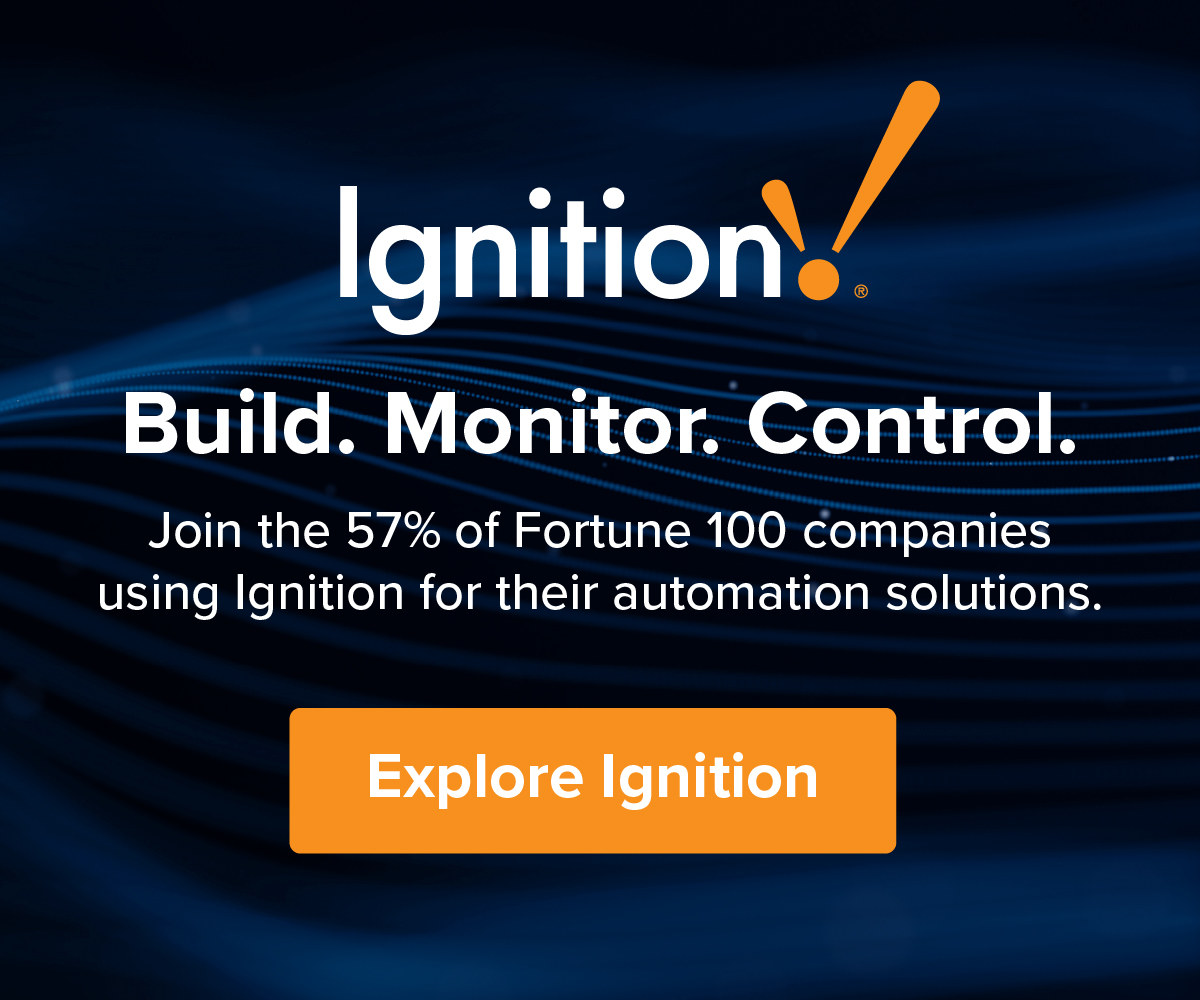by Gary Mintchell | Apr 25, 2024 | Operations Management, Workforce
I’ve been working some with a software company called Quickbase (disclaimer: they sometimes pay me for posts without dictating content and also for appearing on webinars and podcasts). They produce a number of products and software solutions in a no-code/low-code environment for customers. I picked up a phrase from them called “Gray Work”—the time lost when searching for data and information. This news announces the release of their second edition of the Gray Work research report – the “Gray Work Index” released April 16.
In brief:
- Work is Harder and Less Meaningful than Ever, and Everybody Knows It
- More than half – 54% – of workers surveyed feel it’s harder than ever to be productive in their day-to-day work and 58% spend less than half a typical work week on meaningful work that drive results
- AI could be a solution, but only if key steps are taken to ensure the right foundation
According to a recent survey by Quickbase, the software application platform for dynamic work management, over half (54%) of 1923 workers in the US and UK feel it is harder than ever to be productive in their day-to-work – even as their organizations ramp up investments in technology tools and software to enhance productivity, work management and collaboration.
Looking across a dozen complex, operationally and process-driven industries (including Construction, Manufacturing, Healthcare, and others), the survey sought to uncover the ways in which disconnected data and information, outmoded and ineffective processes and workflows, and too many technology tools lead employees to feel overwhelmed, ineffective, and frustrated.
- Overwhelmed by technology – 94% of respondents reported feeling overwhelmed by the number of software solutions they need to use every day to get their work done (up from 87% in 2023).
- Too much manual work – 74% of those surveyed say the amount of manual work has either stayed the same or increased compared to one year ago.
- Less time for impactful work – 58% say they spend less than half a typical work week on meaningful work that drives results.
- Hard to get what they need – 45% of respondents say they spend 11+ hours every week chasing information across their organization.
66% of respondents reported that organizations increased investments in tools/software to enhance productivity, work management and collaboration.
Top three challenges per the survey:
- miscommunication (44%)
- duplication of work (43%)
- project delays (42%)
Project management:
- Almost 70% of respondents say the use of multiple project management software solutions makes it harder to share project-related information with others.
- 10% of respondents say they are “extremely confident” in the accuracy of the key project information in their current software solutions
- the remaining 90% express some level of doubt
Quickbase’s “The Gray Work Index” surveyed 1,923 workers in the United States and the United Kingdom & Ireland in February 2024. Respondents included employees from more than a dozen operationally complex industries, including construction, manufacturing, professional services, healthcare, and state & local government.
by Gary Mintchell | Apr 22, 2024 | Operations Management, Workforce
I recently connected with Adrian Heaton, Global Service Manager for ABB Measurement, to discuss the global skills shortage for technical talent in our industry.
A 2021 study conducted by Deloitte and the Manufacturing Institute (MI) predicts that 2.1 million manufacturing positions will go unfulfilled by 2030, partly due to an increasing skills gap.
Following are several points Heaton made during our conversation.
Heaton works in the Measurement and Instrumentation group of ABB focusing on services. He told me that from a service resources point-of-view, finding technicians who want to work in the area and have relevant skills is difficult. In Europe it can take 6-12 months to fill a spot.
He told me, “This is reality—not fake news.” (OK, the US meme has reached Germany, from which we connected.)
It appears to be a pretty global situation that tech colleges are an important source for people with technical skills. I’ve witnessed that in the US for several years. Looks like the same in Europe. He also mentioned that that can be a problem as students graduate in one country where opportunities are not abundant, so they move to other countries to find appropriate jobs.
I asked about something I had heard years ago where the large automation suppliers may have an advantage hiring talented people over smaller companies. He said that sometimes customers are having trouble finding people while the large automation suppliers have brand awareness that helps attract applicants. While marketing is key to attracting talent, training and employment contracts that offer more potential for development are also important.
Training, has always been a strong suit at ABB, but they are standardizing more, making it consistent across lines. E-learning of instrumentation is an adjunct to the classroom. Training is prepared as part of product launches so that all concerned can get thorough updates. “It’s the DNA of the product program.”
Safety is an important part of training at ABB. They are taught to evaluate what is risk. Perhaps instrumentation is low voltage but there are enclosed spaces, and underground places to consider. The global services team puts on as many miles driving to sites as miles around the Earth. So driving safety is another part of the service training DNA. “It’s extensive so that the team gets home at night.”
Heaton confirms my observation that Virtual Reality technology seems best suited for training. But it is very expensive to develop the visuals for VR in order to achieve good industrial training.
I asked about Augmented Reality (AR). ABB has a program Visual Remote Support that allows remote experts to “look over the shoulder” of the on site technician. This program was a success during COVID. People couldn’t travel and customers found the experience quite good. But after COVID, people wanted to meet people face-to-face again, so the program has dropped off some. It remains useful for checking things out prior to a visit such that the traveling technician can bring the right tools and parts.
ABB put together training using AR/VR technologies during COVID. They found customer experience was quite good. There were a number of programs where customers could “send” multiple people to training without travel cost. Students could actually manipulate instruments and valves from their remote locations.
AR remote support faces one major challenge for in oil and gas plants and other plants with hazardous areas—you can’t take an iPad in.
I haven’t had a talk with ABB for quite some time. It’s good to see how a major automation company responds to the skills crisis.
by Gary Mintchell | Mar 27, 2024 | Automation, Industrial Computers, Operator Interface, Technology, Workforce
Still more catching up on news from the recent MODEX trade show in Atlanta. Zebra Technologies has grown from a specialty printer company that I used for a couple of projects in the 90s to an interesting automation solutions company. It has introduced extensions to its wide range of mobile compute and connectivity devices. This news details a number of new products designed to enable quality work from your front-line workers.
First a note about some research the company conducted. None of these findings shock me.
Operations leaders in the manufacturing, warehouse, retail, and transportation and logistics industries worldwide continue to grapple with fostering resilient supply chains amid heightened omnichannel demands for speed and accuracy, ongoing labor shortages, and economic uncertainty. Recognizing the criticality of an optimized supply chain, 89% of decision-makers surveyed in Zebra’s 2023 Global Warehouse Study say if their organizations do not invest in technology to improve operations, they will not meet their business objectives.
According to Zebra’s study, eight in 10 decision-makers and frontline workers said using more technology and automation would help meet or exceed productivity goals. In addition, decision-makers (54%) and workers (49%) agree addressing worker comfort and ergonomics is a top workforce initiative.
And something about a number of new products.
Zebra’s new RS2100 wearable scanner – the industry’s smallest back-of-hand (BOH) scanner – enhances productivity and delivers new levels of comfort to workers. The unique mount on the RS2100 leaves the palm completely unobstructed, providing greater freedom to handle items.
Zebra will also launch the WT6400 and WT5400 wearable computers. Engineered to streamline hands-free workflows while enhancing comfort, the WT6400 and WT5400 provide more flexibility for picking orders, sorting items, and managing inventory with greater efficiency and accuracy. With a larger display and integrated keyboard, the WT6400 is easily accessible for right- and left-handed workers, and its integrated angled camera captures images to document damaged items or completed tasks. The WT6400 is designed for demanding environments, including freezer operation (-30°C), while the WT5400 introduces a new class of wearable computers for hands-free retail workflows.
A new addition to Zebra’s TC5X series are the TC53e/TC58e/TC53e-RFID mobile computers. Designed to meet today’s latest standards, the TC5Xe series offers 5G, Wi-Fi 6E, integrated RFID, premium security features and contains 25% post-consumer recycled plastic by mass. The TC53e-RFID offers integrated short-range UHF RFID, enabling associates to take inventory in the backroom, validate tickets at a concert or verify all items in a shopping cart from up to nearly 4 ft/1.2m away with the same device ergonomics as the standard TC53e.
The TC5Xe series, WT6400 and WT5400 are all powered by the Qualcomm QCM4490 processor and Qualcomm QCS4490 processor which provide long lifecycles and more processing power compared to previous generations. These devices can run multiple applications including apps powered by augmented reality and AI, apps designed for voice and line of business as well as simple ‘green screen’ legacy apps.
Beyond its new wearables and mobile computers, Zebra will also showcase its recently launched MC9400 series, the ultra-rugged mobile computer designed to enhance workflow efficiency and device security across the retail, warehouse, manufacturing, and transportation and logistics industries.
by Gary Mintchell | Mar 11, 2024 | Workforce
I first wrote about DeepHow almost a year ago. DeepHow is an AI solution for skilled trades know-how capturing and training. The video platform and capture app empowers organizations to capture their processes on a smart device, upload it into the platform via the cloud, and then leverage AI to segment, transcribe, and translate the video into steps and relevant languages for their multilingual workforce. Workers can access the videos at any time, allowing them to onboard faster and upskill more efficiently with their company’s proprietary processes.
Casandra (Cassie) Franklin, Program Manager Innovation and Training Center at ISAIC in Detroit, used the system and chatted with me recently about actually using the system to train employees in the sewing area. She works at quite an interesting organization. As its website proclaims:
The next big thing in the apparel industry is here. It’s not in Paris. Or New York. Or L.A. It’s right here in Detroit. Offering education, apprenticeships, and opportunity for new careers that look, sound, feel, pay, and are better. With a commitment to re-shoring, workforce development, and sustainability, ISAIC – Industrial Sewing and Innovation Center, will redefine how the future is fashioned.
A Detroit-based 501c3 nonprofit, ISAIC is a national resource for those committed to positive impact through responsible production of high-quality garments and provides solutions centered around people, education, advanced manufacturing and upward mobility for workers. ISAIC’s proprietary training curriculum is being used in multiple states across the country. Its learning and contract manufacturing factory is located in mid-town Detroit, above Carhartt’s flagship store.
Its mission is defined thus: To redefine the future of work by putting people trained in advanced and emerging manufacturing technologies at the forefront of sustainable soft goods production with a commitment to the wellbeing of our team, partners, community and planet.
Franklin told me that they had tried some training systems. Mostly they were too complicated to maintain. With the DeepHow system, they had an easy workflow for making and using instructional videos. They were easy for their workers to access (QR code to HMI). The workers learned efficiently and effectively.
DeepHow told me: Traditional methods of learning like text-based SOPs can’t be updated efficiently, and the average worker today would rather turn to video to learn new skills. They can watch the expert right on the screen, and emulate that expertise on their own. Creating video content doesn’t have to be hard or require the support of a professional video production team with expensive equipment.
The system looks like this (information from DeepHow):
DeepHow’s Workflow Capturer lets you capture experts’ workflow via video as they perform real tasks. Its native apps (iOS & Android) are designed for multi-language capture and are noise-proof for industrial environments. Not to mention the easy setup and auto uploading management, DeepHow is incredibly user-friendly.
Once videos are captured and uploaded, AI Stephanie, DeepHow’s core technology, takes over. Using Natural Language Processing (NLP), image analysis, and computer vision, AI Stephanie indexes and segments your videos into key workflow steps. She also auto-tags keywords and images, auto-summarizes step names, generates subtitles, and converts them into multiple languages.
DeepHow’s Workflow Builder lets you create smart how-to videos by integrating video, diagrams, subtitles, and translations. This module enables minor text editing and review, offers annotation and video trimming features, and allows for workflow reviewing, publishing, and sharing.
Workflow Navigator delivers step-by-step workflow guidance in multiple languages and supports in-video search. Users can interact with AI Stephanie to learn anytime, anywhere, and at their own pace. The adaptive video resolutions ensure that video content is accessible and engaging for all.
DeepHow also boasts a Skills Management module. It empowers supervisors and HR professionals to create, assign, manage, and track skills training. It uses AI to recommend skills and promotes personal development. This means you can efficiently assess skills, certify workers, and have a clear, insightful understanding of your workforce’s capabilities.
The Analytics component of DeepHow provides a comprehensive enterprise-wide review of video training health, tracks engagement, and pinpoints skill gaps and opportunities for improvement.
by Gary Mintchell | Feb 26, 2024 | News, Workforce
People have been moaning about Boomers leaving the workforce and a coming worker gap for 20 years. Perhaps the time has arrived? How is your hiring of young people going?
Now, I know that you can’t really evaluate each candidate by what marketing-designated generation they were born into. However, consider some statistics gathered by a data company who performed an analysis of TikTok and Google search data.
Few arenas of life reveal as much as youth sports does about—parents. I remember my own good times and, with much chagrin, my bad ones. Thirty-five years working as a referee in youth and high school soccer revealed the growing trend of “helicopter” parents who hovered over their kids to protect them and “snow plow” parents who tried to pave the way for them. If these results don’t reveal what happens to kids entering the workforce after experiencing life as the recipient of helicopter or snow plow parenting, I’ve lost the ability to observe and analyze.
Job Shift Shock is the most popular work trend with a total 1.7B TikTok views and nearly 121K monthly searches on Google. The trend leads the list as it describes the transition from initial excitement of beginning a new job to the disappointment of unexpected responsibilities.
Quiet Quitting ranks as the second most popular trend, having 1.1B views on TikTok and over 612.5K searches on Google. This trend’s place in the list is secured by the increasing cost of living and workers’ dissatisfaction with their salaries or job conditions.
I can think of few clearer signals about what happens to young people when they have always had someone there to smooth the way for them. I remember hiring a young man recently graduated from university. He wondered how long (a year or two?) before he would be in line to be president of the company.
So, how is your hiring going? Must you cope with these entrants? Can you screen them out?
by Gary Mintchell | Jan 17, 2024 | News, Workforce
This news came from a company called Beekeeper. It develops and supplies productivity enhancement systems for frontline, or “deskless” workers. They conducted a survey of 8,000 individuals including frontline workers, their managers, and executives to explore trends. Its 2024 Frontline Workforce Pulse Report released January 17 details several ways frontline businesses can improve the employee experience amid high inflation and increased rates of attrition.
The news is hardly surprising that managers and workers have different views. I found during my time in manufacturing and other pursuits that asking the people who do the work for ideas on what constrains them and what could be improved constitutes one of the best uses of time a manager can spend. If all you are hiring is bodies with hands, buy a robot. People can, and do, observe and think.
Anyway, check out a few details.
The report suggests a growing disconnect between frontline workers and management, leading to increased disengagement among frontline workers. This widespread disaffection has drastic economic consequences, including a projected $8.8 trillion in lost productivity and 40% to 50% of workers across frontline industries leaving their jobs for both improved work/life balance and compensation.
“The pandemic may be in the rearview, but the problems it created for frontline workers haven’t gone anywhere,” said Cristian Grossmann, Beekeeper CEO and co-founder. “Turnover rates remain alarmingly high across industries, with frontline workers feeling overstressed, undervalued, and often unheard by management. As this year’s report makes abundantly clear, solving these persistent problems requires empowering frontline teams with technology that increases communication across the board — improving employee satisfaction, retention and productivity.”
Per the report, the daily challenges facing frontline workers have worsened significantly in the years since the pandemic. Inflation is a top-line concern, with nearly half of all workers (48%) citing wages falling behind inflation as their number-one source of stress.
But as the report demonstrates, wages tell just one part of this story. Poor work/life balance has contributed just as significantly to the ongoing Great Migration. High turnover, chronically understaffed shifts, and a lack of shift scheduling flexibility all are leading frontline workers to feel overstressed and underappreciated. According to the report, in industries like hospitality and manufacturing the majority of those who leave do so for a better work/life balance, as opposed to higher pay.
The problems of modern frontline work go deeper than work/life balance, to the very nature of the work itself. Frontline workers are more motivated, and more productive, when they find their jobs engaging and fulfilling. According to the report, a friendly and fun environment is the number-one motivator for frontline workers, in addition to the satisfaction of finishing a job and the opportunities provided for ongoing learning and development. When asked where “positive manager feedback” ranks, managers put it at number two — while the frontline workers themselves put it at number seven. This is just one disconnect of many identified in the report.
Another notable disconnect: the majority of surveyed Head Office employees (52%) expected frontline workers to cite low morale as their number-one impediment to productivity, but only 15% of frontline workers actually felt this way. A lack of recognition, poor cross-team communication, and understaffed shifts matter much more. The report suggests that clogged lines of communication prevent frontline workers from feeling safe and fulfilled, and severely hurting productivity in the process.
At the heart of today’s worker/manager disconnect are inadequate communication and a lack of insights into frontline needs. Frontline workers and managers who engage in a continuous two-way conversation on everything from expectations and performance to perceived job safety and satisfaction create an environment of trust and mutual respect. Managers need to better understand their teams’ needs to be truly successful in their roles.
Technology plays a significant role. Productivity tools that blend seamlessly into a worker’s daily routine can radically simplify complicated tasks such as onboarding, shift allocation, cross-team collaboration, and learning and development. Beekeeper’s mobile-first platform provides every worker with the tools required to sync effectively and efficiently with other teams, to reallocate shifts effortlessly, and to learn new and needed skills thoroughly and promptly. Bringing all communication into a single platform also establishes desperately needed lines of communication, and ensures that every worker feels that their voice is heard.
About Beekeeper
Beekeeper empowers frontline businesses and their workers with the digital solutions they need to do their best possible work. Founded in 2012, Beekeeper’s mobile-first platform was designed and built for deskless employees who — despite representing 80% of the global workforce — have been chronically underserved when it comes to workplace technology. With Beekeeper’s Frontline Success System, companies can automate paper-based processes, communicate with employees in real-time from anywhere, and improve the engagement, productivity, and safety of frontline teams.





